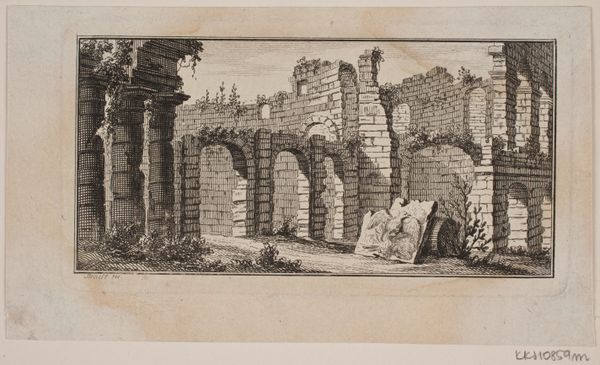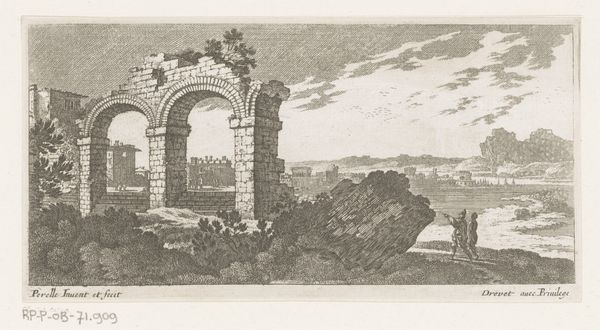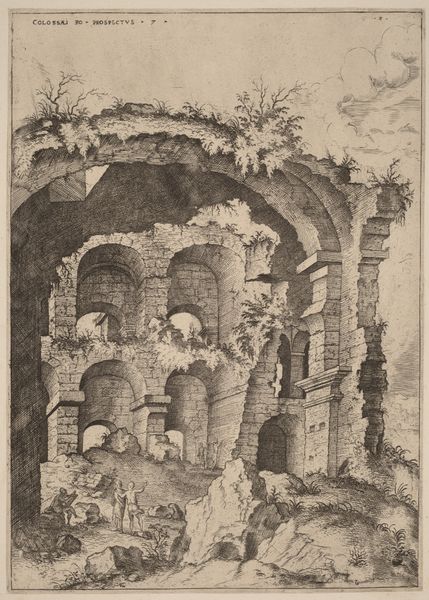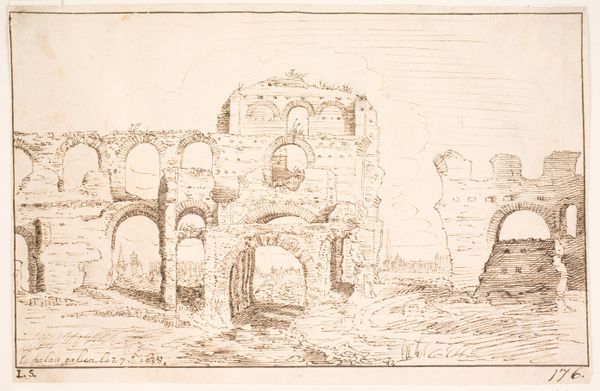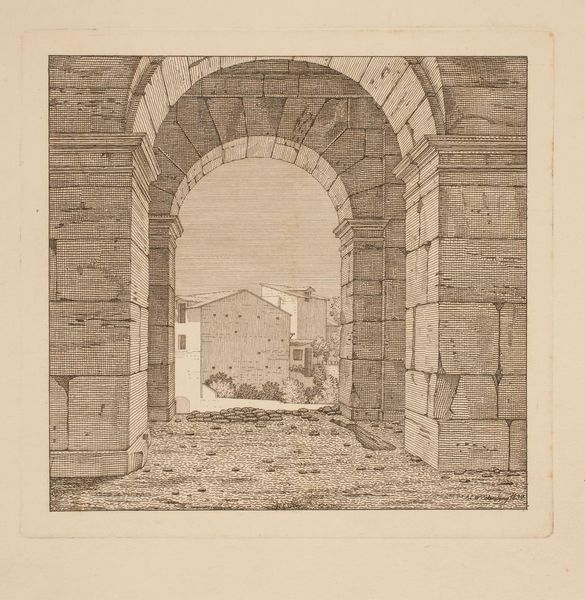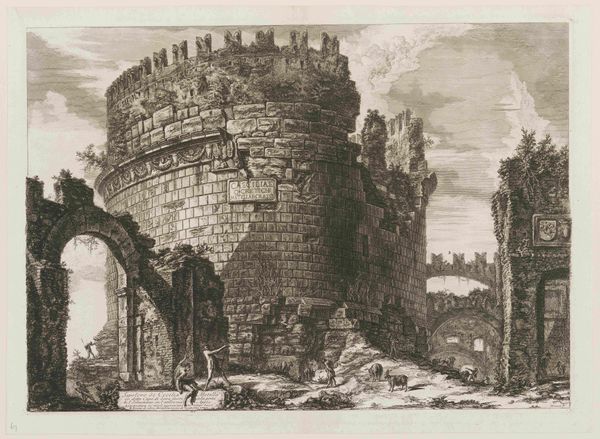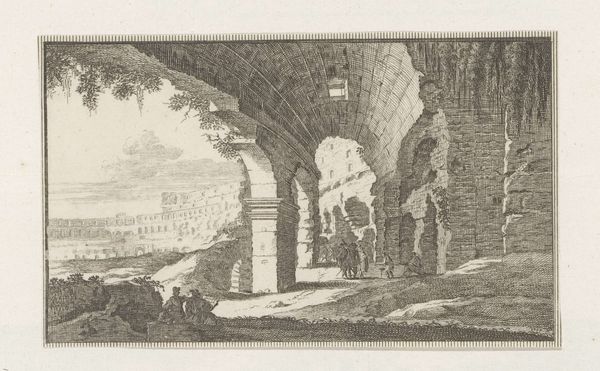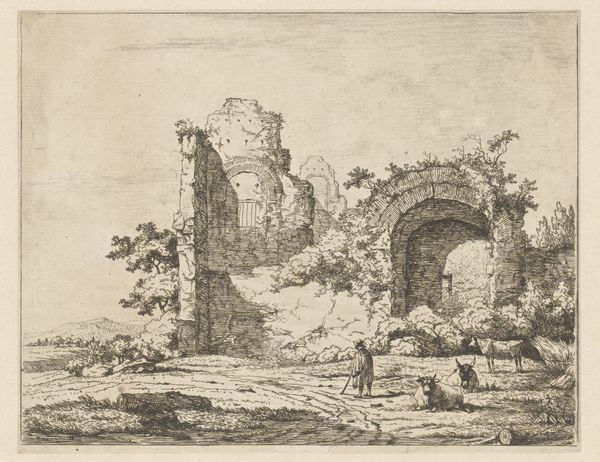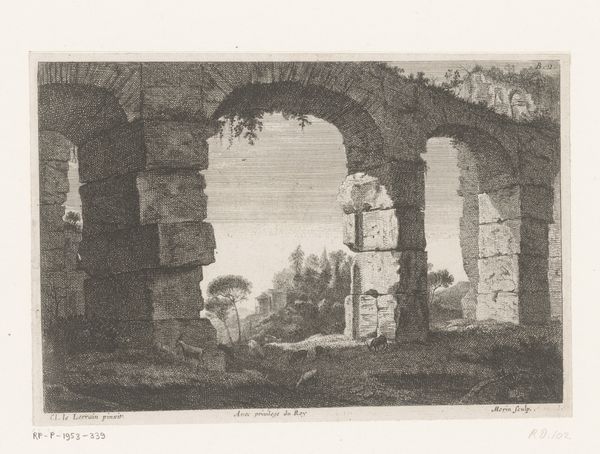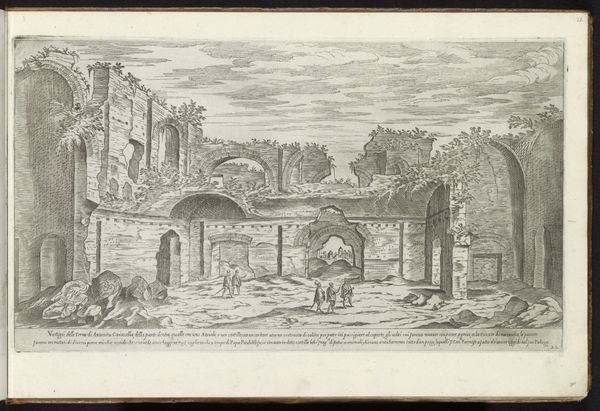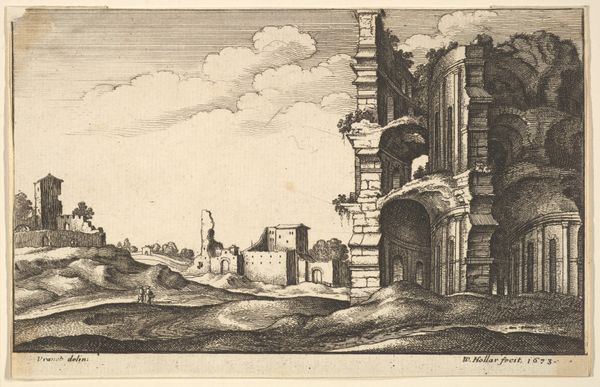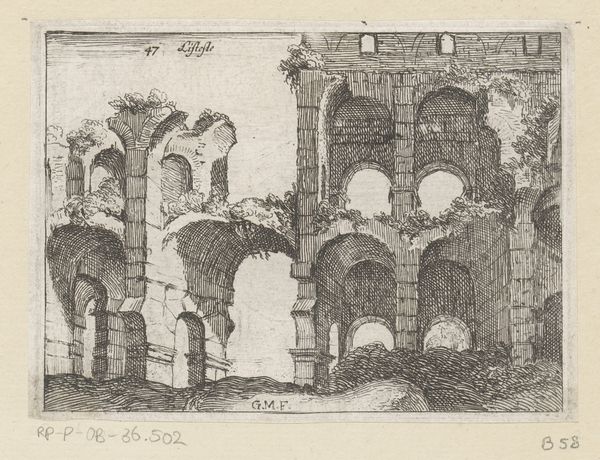
print, etching, engraving, architecture
#
neoclacissism
# print
#
etching
#
landscape
#
etching
#
geometric
#
line
#
history-painting
#
engraving
#
architecture
Dimensions: 70 mm (height) x 125 mm (width) (plademaal)
Curator: The stark contrasts really draw me in. What a desolate scene, rendered so meticulously. Editor: This is "Store ruiner med buer i flere etager", or "Large Ruins with Arches in Several Floors," an etching and engraving from around 1776-1780, created by J.F. Clemens. Curator: Ah, Clemens! Looking at this work through the lens of post-colonial studies, I see more than just architectural decay. The ruin becomes a powerful symbol of empires past, of power structures eroded by time and shifting social tides. Who inhabited this space? Who profited? Whose labor built these arches? The unearthing of lost power dynamics interests me far more. Editor: And the arches themselves—their repetitive form creates a sense of rhythmic continuity despite the crumbling brickwork. Arches appear frequently throughout the history of architecture and the arch carries symbolic significance. Consider the arch as a symbol of triumph, portals to new worlds, the architecture itself can mirror that arc of ascension. Curator: Precisely. The repetition almost mimics the cyclical nature of oppression. You can find such architectural allegories, not just of physical structure, but of social constructs collapsing in on themselves. Editor: The history is in the object as the marks of memory linger. Curator: I’d argue these engravings grant agency to the oppressed. What does it mean to build such lasting ruins—ruins lasting long after the society’s social and cultural goals became defunct? This speaks to the enduring strength needed for communities that continually resist subjugation. The marks, intentional or not, reveal this power. Editor: Perhaps… And the scale is impressive too, even captured in this relatively small print. We’re dwarfed by what remains, even in miniature. It triggers that sense of "sublime" - of awe tinged with fear before something vast and powerful. Curator: It certainly ignites the historical imagination, and prompts further, urgent investigation. What remains visible? What remains unseen? I believe Clemens created the latter, unseen image with a clarity for viewers across time. Editor: The dialogue between enduring form and encroaching oblivion keeps my eye moving throughout. Such intricate cross-hatching to convey texture, depth, and a narrative of structural failing... Curator: A fruitful discussion indeed, highlighting the depth this work inspires, prompting questions on permanence and cultural memory. Editor: Yes. This etching provides space for personal contemplation and wider cultural association that I know I'll ponder long after this visit.
Comments
No comments
Be the first to comment and join the conversation on the ultimate creative platform.
